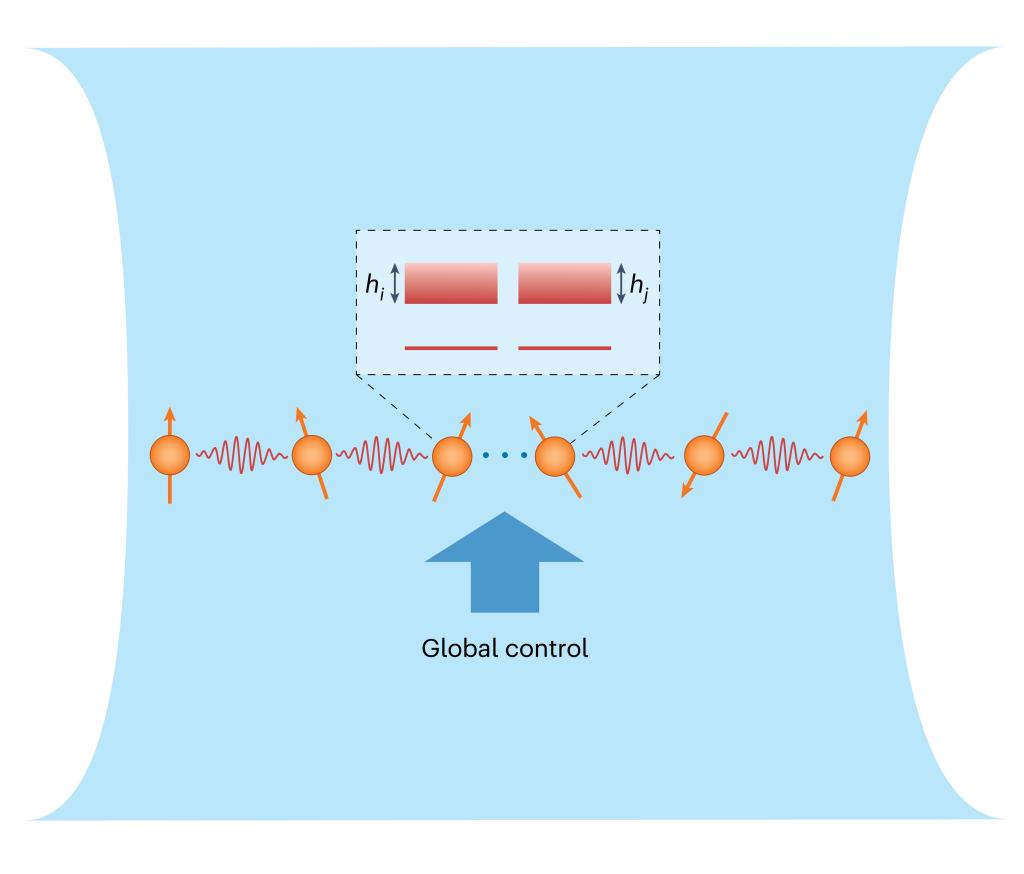
Yaoming Chu and Jianming Cai
A quantum engineering technique powered by disorder ofers access to local correlation functions down to single-site resolution in nuclear spin ensembles, allowing the study of both spin and energy hydrodynamics.

Yaoming Chu, Xiangbei Li and Jianming Cai
Surpassing the standard quantum limit and even reaching the Heisenberg limit using quantum entanglement, represents the Holy Grail of quantum metrology. However, quantum entanglement is a valuable resource that does not come without a price. The exceptional overhead for the preparation of large-scale entangled states raises disconcerting concerns about whether the Heisenberg limit is fundamentally achievable. Here we find a universal speed limit set by the Lieb-Robinson light cone for the quantum Fisher information growth to characterize the metrological potential of quantum resource states during their preparation. Our main result establishes a strong precision limit of quantum metrology accounting for the complexity of many-body quantum resource state preparation and reveals a fundamental constraint for reaching the Heisenberg limit. Our result makes it possible to identify the essential features of quantum many-body systems that are crucial for achieving the quantum advantage of quantum metrology and brings a new perspective to understanding many-body quantum dynamics from quantum metrology.
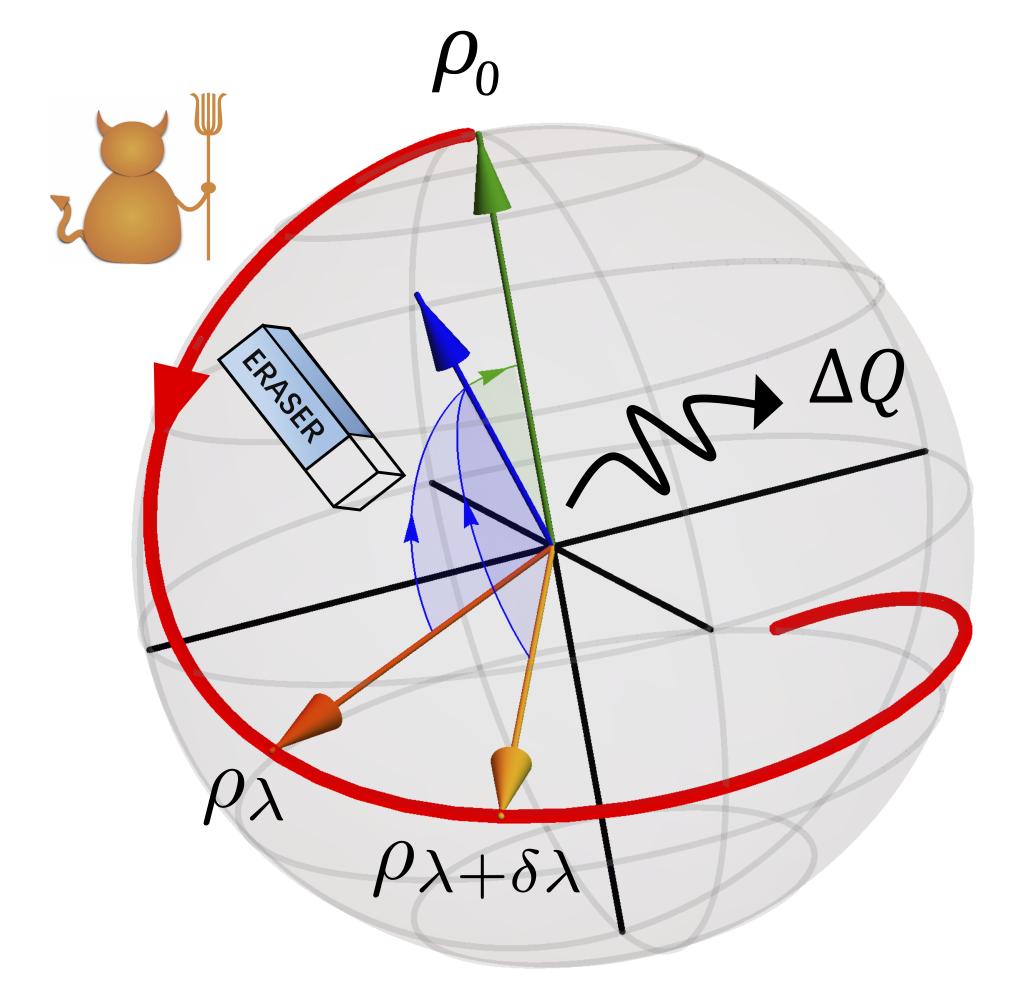
Yaoming Chu and Jianming Cai
The heat dissipation in quantum metrology represents not only an unavoidable problem towards practical applications of quantum sensing devices but also a fundamental relationship between thermodynamics and quantum metrology. However, a general thermodynamic principle which governs the rule of energy consumption in quantum metrology, similar to Landauer’s principle for heat dissipation in computations, has remained elusive. Here, we establish such a physical principle for energy consumption in order to achieve a certain level of measurement precision in quantum metrology, and show that it is intrinsically determined by the erasure of quantum Fisher information. The principle provides a powerful tool to investigate the advantage of quantum resources, not only in measurement precision but also in energy efficiency. It also serves as a bridge between thermodynamics and various fundamental physical concepts related in quantum physics and quantum information theory.
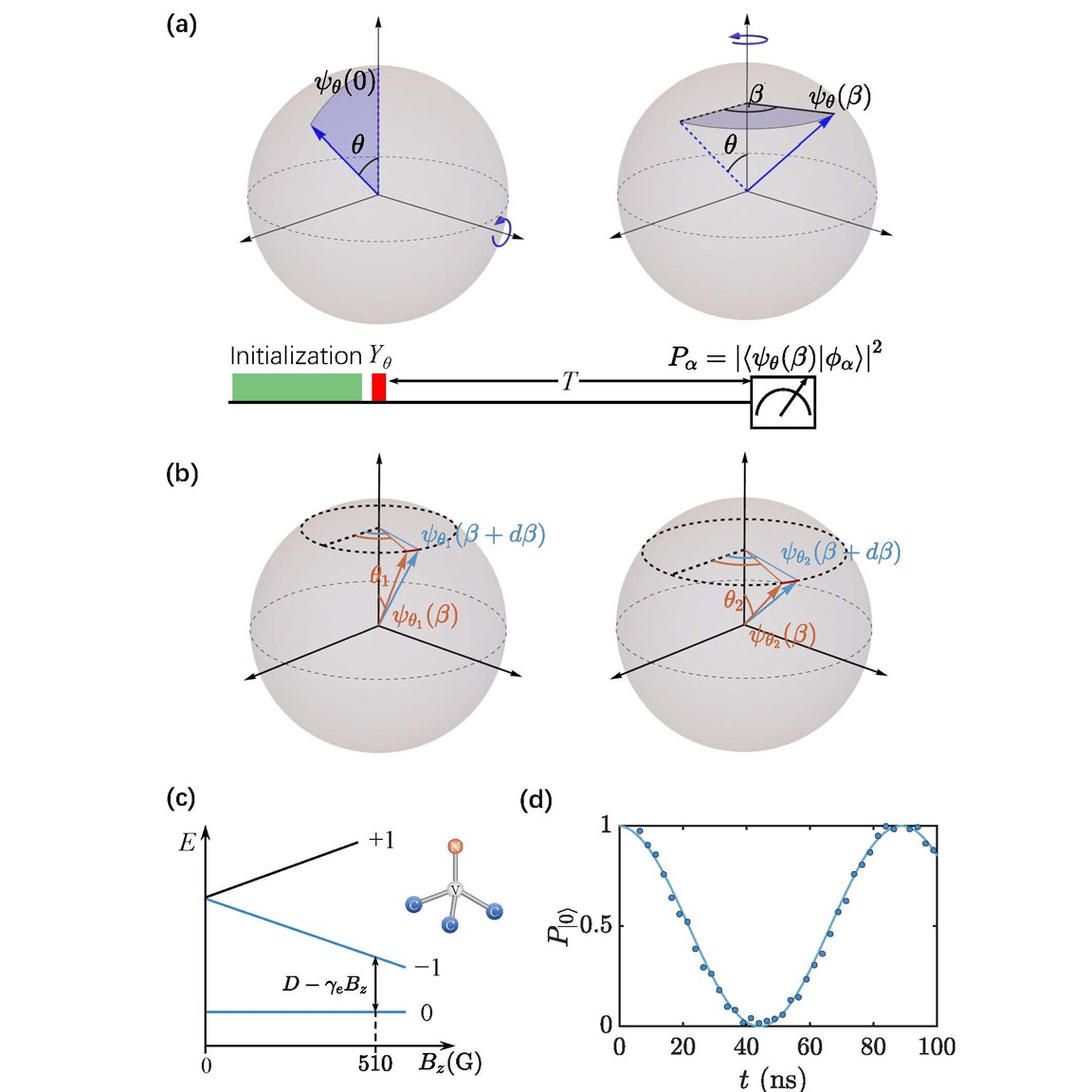
Min Yu, Yu Liu, Pengcheng Yang, Musang Gong, Qingyun Cao, Shaoliang Zhang, Haibin Liu, Markus Heyl, Tomoki Ozawa, Nathan Goldman and Jianming Cai
The quantum Cramér–Rao bound sets a fundamental limit on the accuracy of unbiased parameter estimation in quantum systems, relating the uncertainty in determining a parameter to the inverse of the quantum Fisher information. We experimentally demonstrate near saturation of the quantum Cramér–Rao bound in the phase estimation of a solid-state spin system, provided by a nitrogen-vacancy center in diamond. This is achieved by comparing the experimental uncertainty in phase estimation with an independent measurement of the related quantum Fisher information. The latter is independently extracted from coherent dynamical responses of the system under weak parametric modulations, without performing any quantum-state tomography. While optimal parameter estimation has already been observed for quantum devices involving a limited number of degrees of freedom, our method offers a versatile and powerful experimental tool to explore the Cramér–Rao bound and the quantum Fisher information in systems of higher complexity, as relevant for quantum technologies.
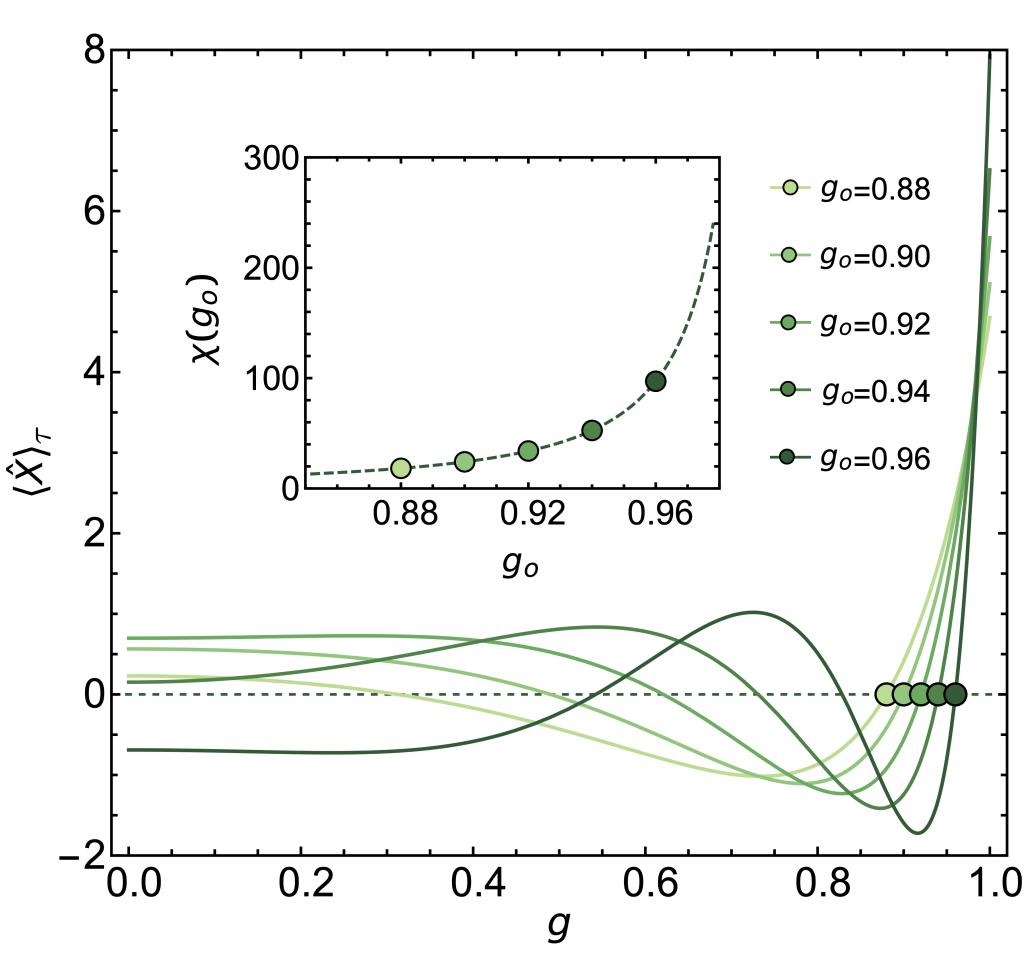
Yaoming Chu, Shaoliang Zhang, Baiyi Yu, and Jianming Cai
Quantum criticality, as a fascinating quantum phenomenon, may provide significant advantages for quantum sensing. Here we propose a dynamic framework for quantum sensing with a family of Hamiltonians that undergo quantum phase transitions (QPTs). By giving the formalism of the quantum Fisher information (QFI) for quantum sensing based on critical quantum dynamics, we demonstrate its divergent feature when approaching the critical point. We illustrate the basic principle and the details of experimental implementation using quantum Rabi model. The framework is applicable to a variety of examples and does not rely on the stringent requirement for particular state preparation or adiabatic evolution. It is expected to provide a route towards the implementation of criticality-enhanced quantum sensing.
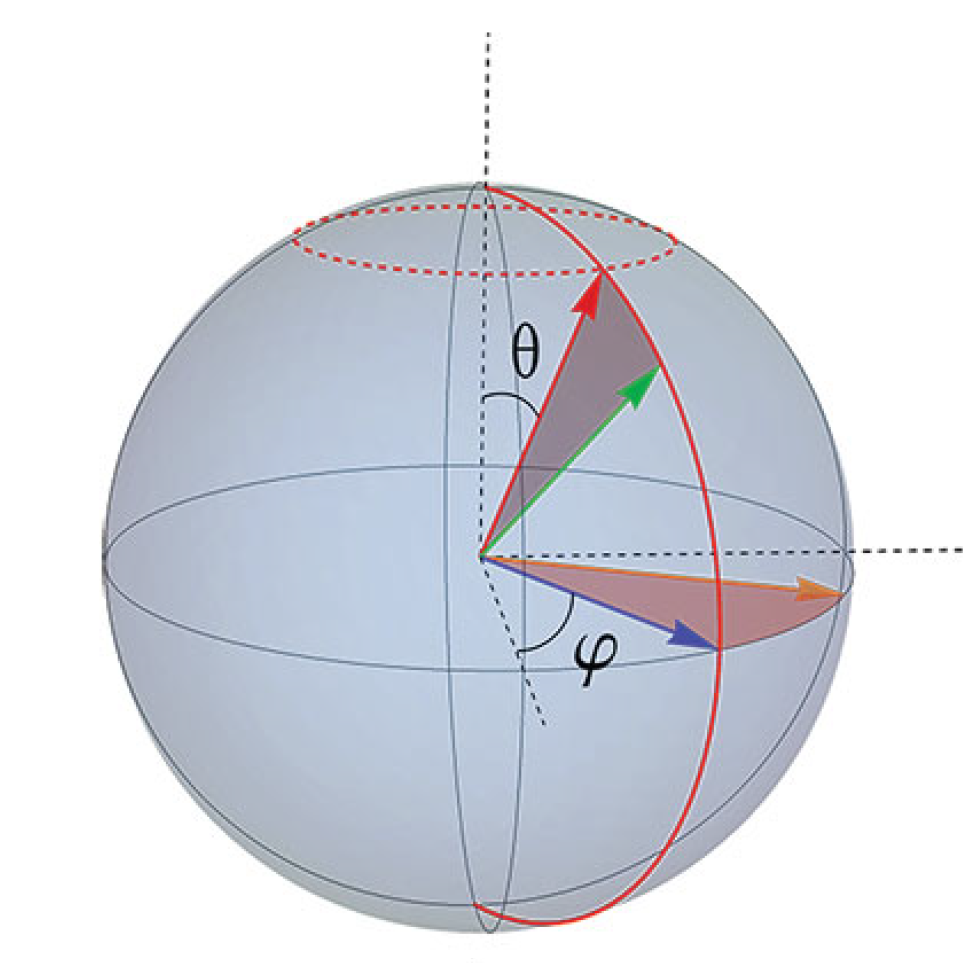
Min Yu, Pengcheng Yang, Musang Gong, Qingyun Cao, Qiuyu Lu, Haibin Liu, Shaoliang Zhang, Martin B Plenio, Fedor Jelezko, Tomoki Ozawa, Nathan Goldman, Jianming Cai
Geometry and topology are fundamental concepts, which underlie a wide range of fascinating physical phenomena such as topological states of matter and topological defects. In quantum mechanics, the geometry of quantum states is fully captured by the quantum geometric tensor. Using a qubit formed by an NV center in diamond, we perform the first experimental measurement of the complete quantum geometric tensor. Our approach builds on a strong connection between coherent Rabi oscillations upon parametric modulations and the quantum geometry of the underlying states. We then apply our method to a system of two interacting qubits, by exploiting the coupling between the NV center spin and a neighboring 13C nuclear spin. Our results establish coherent dynamical responses as a versatile probe for quantum geometry, and they pave the way for the detection of novel topological phenomena in solid state.

Pengcheng Yang, Min Yu, Ralf Betzholz, Christian Arenz, and Jianming Cai
Single-qubit measurements are typically insufficient for inferring arbitrary quantum states of a multiqubit system. We show that, if the system can be fully controlled by driving a single qubit, then utilizing a local random pulse is almost always sufficient for complete quantum-state tomography. Experimental demonstrations of this principle are presented using a nitrogen-vacancy (NV) center in diamond coupled to a nuclear spin, which is not directly accessible. We report the reconstruction of a highly entangled state between the electron and nuclear spin with fidelity above 95% by randomly driving and measuring the NV-center electron spin only. Beyond quantum-state tomography, we outline how this principle can be leveraged to characterize and control quantum processes in cases where the system model is not known.
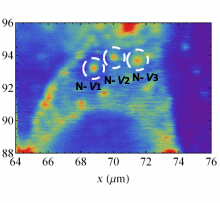
Q.-Y. Cao, P.-C. Yang, M.-S. Gong, M. Yu, A. Retzker, M.B. Plenio, C. Müller, N. Tomek, B. Naydenov, L.P. McGuinness, F. Jelezko, and J.-M. Cai
Because of its superior coherent and optical properties at room temperature, the nitrogen-vacancy (N-V) center in diamond has become a promising quantum probe for nanoscale quantum sensing. However, the application of N-V containing nanodiamonds to quantum sensing suffers from their relatively short spin coherence times. Here we demonstrate energy-efficient protection of N-V spin coherence in nanodiamonds using concatenated continuous dynamical decoupling, which exhibits excellent performance with a less-stringent microwave-power requirement. When this is applied to nanodiamonds in living cells, we are able to extend the spin coherence time by an order of magnitude to the T1 limit of 30 μs. Further analysis demonstrates concomitant improvements of sensing performance, which shows that our results provide an important step toward in vivo quantum sensing using N-V centers in nanodiamond.
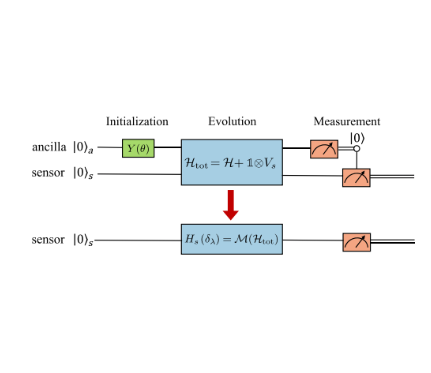
Yaoming Chu, Yu Liu, Haibin Liu, and Jianming Cai
Quantum sensing exploits the fundamental features of a quantum system to achieve highly efficient measurement of physical quantities. Here, we propose a strategy to realize a single-qubit pseudo-Hermitian sensor from a dilated two-qubit Hermitian system. The pseudo-Hermitian sensor exhibits divergent susceptibility in a dynamical evolution that does not necessarily involve an exceptional point. We demonstrate its potential advantages to overcome noises that cannot be averaged out by repetitive measurements. The proposal is feasible with the state-of-art experimental capability in a variety of qubit systems, and represents a step towards the application of non-Hermitian physics in quantum sensing.
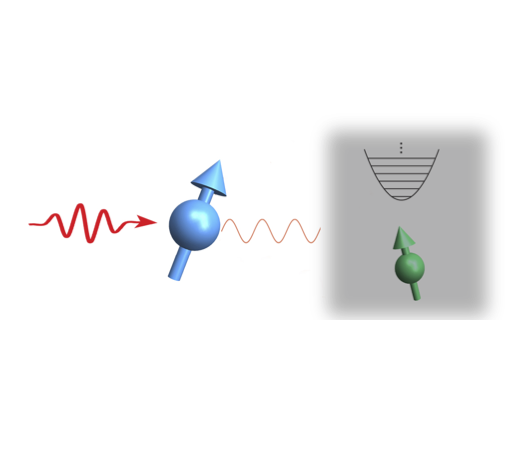
Yu Liu, Jiazhao Tian, Ralf Betzholz, and Jianming Cai
We propose a novel strategy to reconstruct the quantum state of dark systems, i.e., degrees of freedom that are not directly accessible for measurement or control. Our scheme relies on the quantum control of a two-level probe that exerts a state-dependent potential on the dark system. Using a sequence of control pulses applied to the probe makes it possible to tailor the information one can obtain and, for example, allows us to reconstruct the density operator of a dark spin as well as the Wigner characteristic function of a harmonic oscillator. Because of the symmetry of the applied pulse sequence, this scheme is robust against slow noise on the probe. The proof-of-principle experiments are readily feasible in solid-state spins and trapped ions.
版权所有 Copyright(C) 2018 华中科技大学量子传感与量子测量国际联合实验室